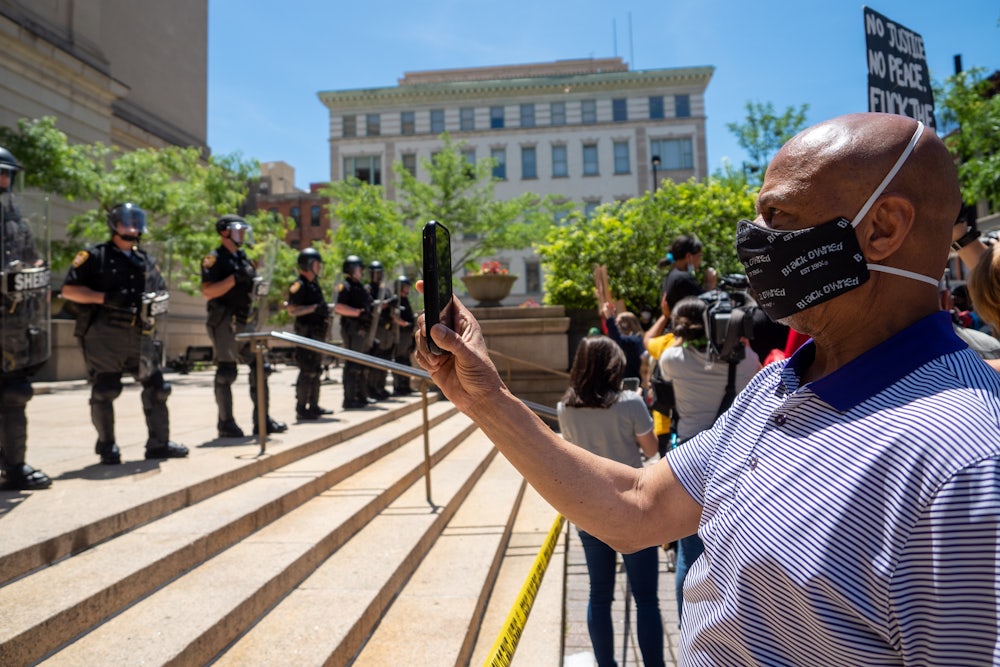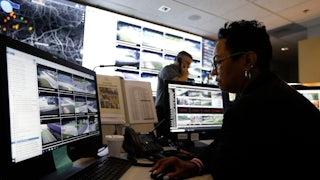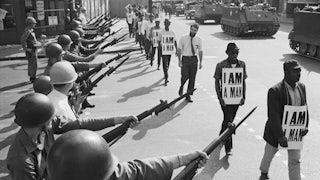Advancements in smartphones and cameras run parallel to landmark moments in Black citizen journalism.
The infamous Rodney King video happened in 1991, just as full-size VHS camcorders became easily affordable for the average consumer. The 2009 Oscar Grant cell phone video was filmed just two years after the first iPhone. Diamond Reynolds’s 2016 video of the Minneapolis police shooting of Philando Castile was filmed a year after mobile livestreaming became popular and, finally, Darnella Frazier’s video of George Floyd’s death came at the simultaneous peaks of smartphone adoption, high-speed broadband, and social media use.
In the hours after Derek Chauvin murdered George Floyd in front of a horrified crowd, Minneapolis police hastily released a shockingly callous statement—“Man Dies After Medical Incident During Police Interaction.” There was no admission of guilt, no clear narrative, and no reference to Chauvin kneeling on Floyd’s neck for nearly nine minutes—just that a “medical incident” somehow spirited Floyd away. It was only thanks to 17-year-old Frazier’s video that the truth of the encounter became public.
Arizona’s House Bill 2319 goes further than any other law in the nation in preventing videos like Frazier’s. Beginning in September, Arizona police are empowered to arrest and charge witnesses with a misdemeanor if they film police within eight feet while on public grounds. A person is still legally permitted to film their own encounter with police (if they’re, say, searching your car), but that might not be physically possible in many instances (if they’re, say, arresting you or pinning you to the ground). Republican Governor Doug Ducey signed the bill into law on July 6, the six-year anniversary of Diamond Reynolds’s filming of Minneapolis Police shooting and killing her fiancé.
If the goal is accountability, police should not determine for themselves if they want to be filmed. Citing officer safety, Republican state Representative John Kavanagh, the bill’s sponsor and a former police officer himself, told press that the law targets only those who “either have very poor judgment or sinister motives,” for filming police.
This is specious reasoning for a host of reasons, chief among them that the Justice Department is currently investigating the Phoenix police department after numerous allegations of police misconduct and excessive force. The bulk of these allegations came during protests, illustrating our outrage-driven cycle of over-policing: A video of police misconduct goes viral, triggering protests; citing the violent clashes between police and protesters, lawmakers clamp down on the protesters and decry them as rioters.
Republicans have been pushing for similar measures since 2020, when Frazier’s footage galvanized protests nationwide, triggering a nationwide onslaught of retaliatory, GOP-backed anti-“riot” bills. These expanded the definition of a “riot” and harshened penalties for many protest-related arrests. Tucked into a small handful of these backlash bills were measures meant to restrict people from filming police, a matter legal experts long thought constitutionally protected under the First Amendment. After all, courts have consistently ruled it’s legal for anyone to film an officer performing their duties in public space.
A troubling counter to this is our shrinking “expectation of privacy,” especially as it relates to police. It’s the eight-foot elephant in the room. Police in the United States already have more CCTV and surveillance cameras per person than China and bolster that by sourcing Ring doorbell footage taken in our neighborhoods, all without consent or a warrant. Police use publicly funded body cameras to film interactions with the public but withhold them when the footage is unflattering or contradictory.
So it’s baffling when police say their being filmed is a threat. States like Oklahoma and Florida bypassed this protection by adding “anti-doxxing” clauses to their anti-protest bills. The loophole bans posting the private information of police officers, not filming them. Republican lawmakers promoted the restrictions as protection against online harassment campaigns that could endanger officers. Free speech advocates quickly noted that the intentionally vague language around “private information” meant even posting an officer’s name badge—often a key component of accountability in videos—could potentially violate the law.
But the Arizona bill goes much further, prohibiting filming and still utilizing vague language. A host of real-world considerations aren’t mentioned by the text of the law itself: What happens if the officer moves toward the person filming? Are they obligated to keep backing up? The person being subjected to a police encounter can film the interaction, but police still have the authority to determine if they’re “interfering with lawful police actions.” How should an officer define “interference”?
A dozen media companies, including the Associated Press and the Freedom of the Press Foundation, spoke out against the new rule. The organizations signed onto an open letter earlier this year from the National Press Photographers Association. Mickey Osterreicher, general counsel for the NPPA, told the Los Angeles Times the ban would be unconstitutional regardless of whichever “arbitrary distances” it outlined, before asking how the eight-feet rule would function during the real-world chaos of an actual protest.
“Is everybody going to be running around with a ruler?” Osterreicher asks. (If you’re filming police misconduct, quietly focus on filming the interaction but also imagine in your mind’s eye objects that are roughly eight feet: a large surfboard, a Christmas tree, Shaquille O’Neal on a one-foot stepladder.)
Legal experts have told media outlets the law is destined to fail under scrutiny in lower courts, but right-wing bills are accelerating throughout the country via a toxic osmosis. The real threat isn’t just that other Republican-led states will adopt similar laws but that the lawsuits challenging them could reach a Supreme Court stacked with conservatives hell-bent on upending established protections. Last year, Scotus refused to hear a case that experts said could have enshrined the right to film police.
Ultimately, these videos are powerful cultural artifacts that can instantaneously trigger shocks to the status quo: high-profile firings, scrutiny of police budgets, even the exceedingly rare wrongful death conviction. The backlash bills and anti-filming laws are meant to quell our collective responses to police brutality. Time will tell the dual responses to this—both of the officer, emboldened to act as though he isn’t being watched, and the Black and Latinx residents, threatened yet again with further police violence.


